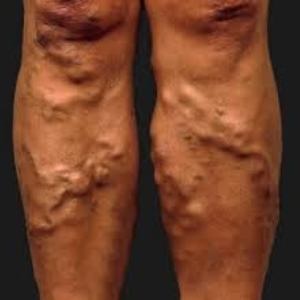
With summer holidays just around the corner when many South Africans travel long distance, people should be aware of the problem of blood clotting and take precautionary measures against it.
Dr Pete Vincent of the Netcare Travel Clinics and Medicross Family Medical and Dental Centre, Tokai, warns that sitting still for long periods of time while travelling in aircraft, trains or motor vehicles can cause some individuals to suffer blood clotting, or deep vein thrombosis (DVT).
DVT usually occurs in the legs (calves or thighs) and can be life threatening if blood clots move into the lungs. Fortunately there are some steps that can be taken to prevent clots from developing.
Recent case
A recent case in which a 72-year-old woman on a flight from the UK to South Africa suffered a DVT that went on to cause her heart to stop (cardiac arrest) highlights one of the dangers of long distance travel.
The woman had to be resuscitated no fewer than six times before she was stabilised and taken to hospital. She has since made a full recovery.
Read: Leg pain signals deadly blood clots
There are individuals who are considered to be higher risk of developing DVT than others and they should take steps to prevent themselves from developing it if they are travelling long distance, according to Dr Vincent.
DVT usually develops towards the end of a trip or just after, although some people can develop problems weeks later.
Some individuals may develop blood clots and not even be aware that they did so because the clots dissipate harmlessly on their own. The danger is when the clots are large enough to block an important blood vessel in the leg or when they travel to the lungs, and inhibit their ability to take in oxygen.
Condition is progressive
Professor Frank Firkin, Head of Haematology, St Vincent’s Hospital, Melbourne, says that the risk of developing a clinically significant DVT is very low in flights of less than four hours duration, but it increases progressively after that.
He suggests that the average increase in the incidence relative to not undertaking a flight of over four hours is approximately one event per 4 500 passenger flights.
Read: Exercise helps deep vein thrombosis complications
Children tend to be more active on long journeys and it is extremely rare for them to have any problems with blood clotting.
It is adults who are at much greater risk, particularly older and less healthy individuals. Those who have a higher risk should take particular care when travelling long distances.
Those at risk of DVT include people who have abnormalities of the blood that predisposes it to clotting. Such individuals may not even know they have a problem with their blood until they suffer DVT.
Additional risk factors for DVT:
- A family or personal history of DVT;
- Hormone therapies such as the contraceptive pill and hormone replacement therapy (HRT);
- Pregnancy and two months post-partum;
- Cancer and cancer treatment;
- Recent surgery;
- Obesity;
- A history of cardiac conditions;
- Chronic or acute illnesses; and
- Age greater than 60 years
- Frequent long flights within a short time of each other.
A DVT can cause a person’s calf or thigh to become painful and swollen. However, it can also be ‘silent’, producing no pain or other noticeable signs whatsoever.
Preventing development of DVT
Dr Vincent says that getting up and walking around can help, but it can also be difficult especially if you have a window seat on an aeroplane.
In such cases you can try exercising your calf muscles every hour by rotating your ankles vigorously. Keep your toes on the ground and use them as a means of resistance while working your ankles up and down.
Wear loose clothing, as tight clothing can restrict blood flow and the body can also swell in the dry conditions of an aeroplane. Make sure you stay hydrated by drinking plenty of water.
Avoid alcohol and too much coffee or tea as these can contribute to dehydration.
Read: Prevent blood clots when flying
Anti-thrombosis socks can offer a measure of protection to those at high risk of developing DVT. Correctly fitting socks can help improve blood flow.
However it is very important that such socks are fitted by a professional as an ill fitting anti-thrombosis sock can restrict blood flow and cause more harm than good.
Read: Danger lurking in your veins
A doctor may prescribe an anti-coagulant prophylaxis in very high risk travellers. According to Professor Firkin, there is no evidence to suggest that aspirin helps prevent DVT, but the anti-coagulants warfarin and low molecular weight heparin can be effective, particularly the latter, which is a self administered injection.
If you are a high risk individual visit your doctor or travel clinic before embarking on a long journey, advises Dr Vincent. The doctor will assess your risks and suggest ways of keeping these to a minimum. Taking a few precautionary measures can help to ensure that you have a safe, memorable trip, concludes Dr Vincent.
Read more:
Travelling increases thrombosis risk




 Publications
Publications
 Partners
Partners










